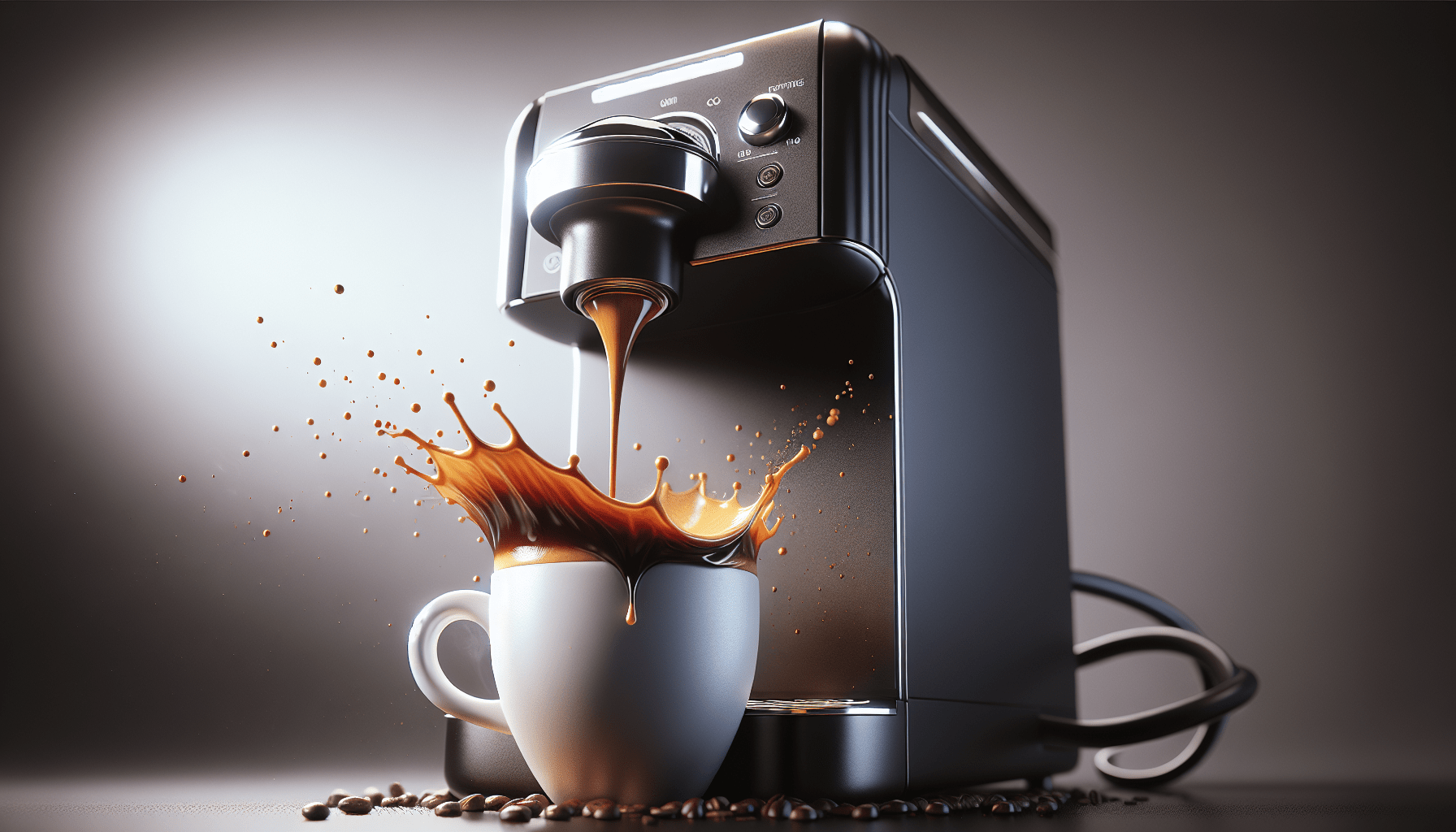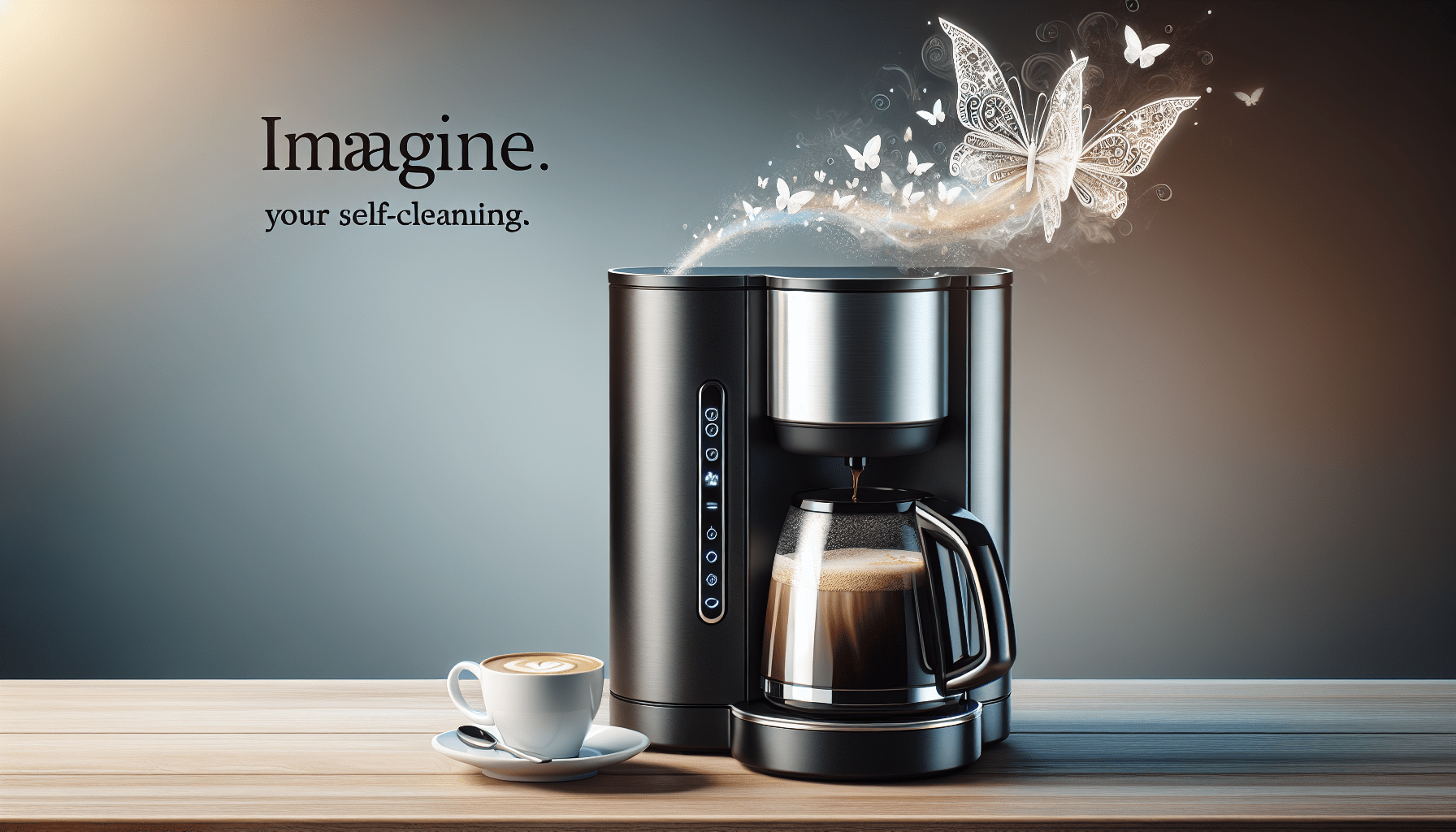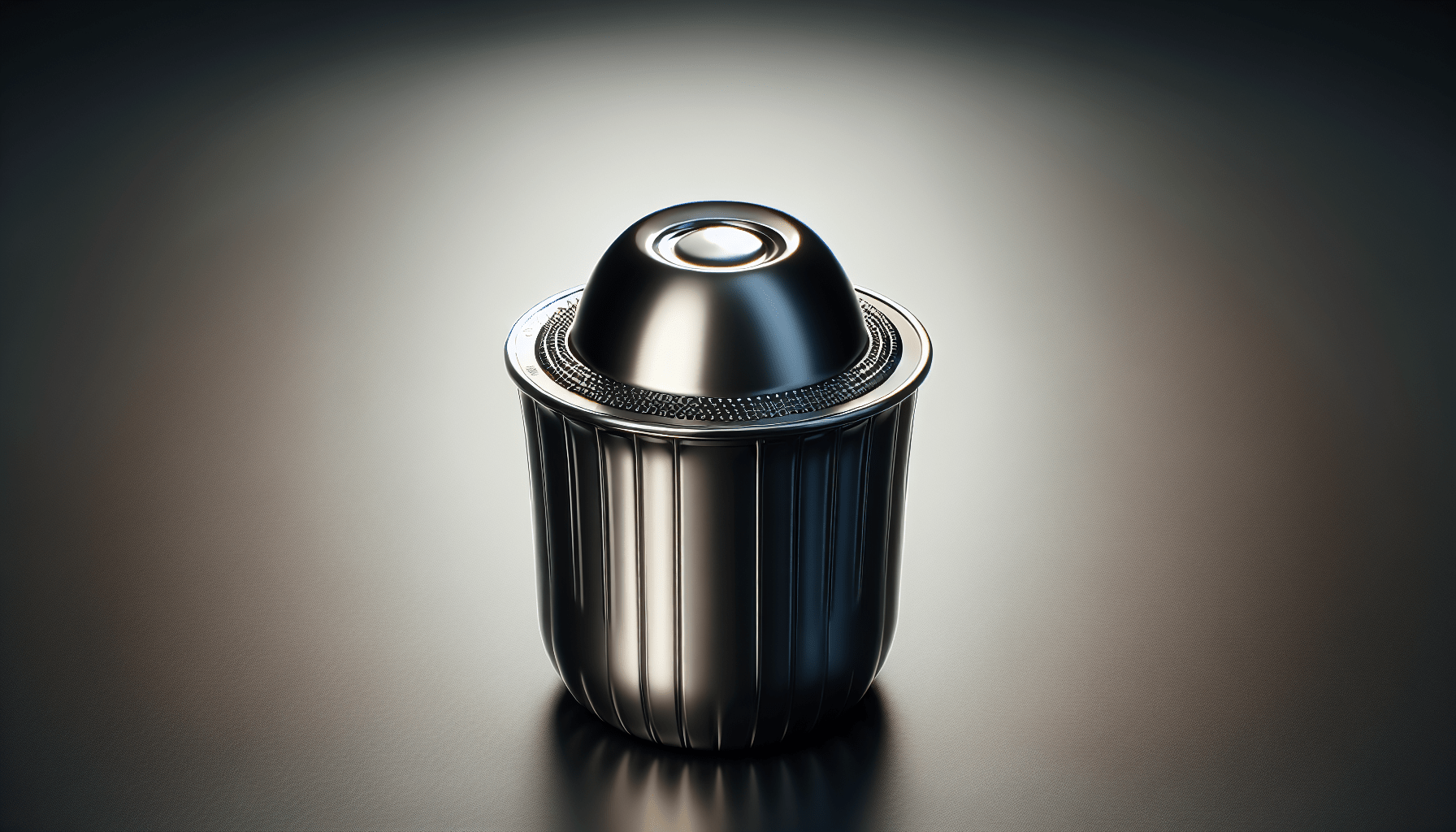If you’ve ever wondered whether your trusty single-serve coffee maker is capable of brewing a delicious shot of espresso, you’re not alone. The convenience and versatility of these machines have revolutionized our morning routines, but can they truly deliver the strong and intense flavor that is synonymous with a well-brewed espresso? In this article, we’ll explore the capabilities of single-serve coffee makers and their ability to create a satisfying espresso experience in the comfort of your own home. Get ready to savor the aroma and taste of your favorite espresso blend, all with the touch of a button.
Understanding Single-Serve Coffee Makers
What are single-serve coffee makers?
Single-serve coffee makers, also known as pod coffee makers or capsule coffee machines, are popular appliances that brew coffee using pre-packaged pods or capsules. These machines are designed to make the brewing process quick and convenient, allowing you to enjoy a freshly brewed cup of coffee without the hassle of grinding beans or measuring coffee grounds.
How do single-serve coffee makers work?
Single-serve coffee makers work by using single-use pods or capsules, which typically contain a pre-measured amount of coffee. When you insert the pod or capsule into the machine and press a button, the machine punctures the pod, allowing hot water to flow through it and extract the coffee. The brewed coffee then drips into a cup or mug placed below the machine’s spout.
Types of single-serve coffee makers
There are several types of single-serve coffee makers available on the market. The most common types include pod-based machines, which use plastic pods, and capsule-based machines, which use aluminum or plastic capsules. Some machines offer the option to use both pods and capsules, giving you more variety in your coffee choices. Additionally, there are machines with built-in milk frothers, allowing you to make various specialty coffee beverages like lattes and cappuccinos.
Defining Espresso
What is espresso?
Espresso is a concentrated form of coffee that is brewed using high pressure and finely ground coffee beans. It is characterized by its rich flavor, strong aroma, and velvety texture. Espresso is the base for various popular coffee drinks such as cappuccinos, lattes, and macchiatos.
Characteristics of espresso
Espresso has several distinct characteristics that set it apart from regular brewed coffee. These include a dark, almost syrupy consistency, a crema – a layer of foam on top of the coffee, and an intense, concentrated flavor. The crema, which is formed during the brewing process, contributes to both the appearance and taste of espresso.
Traditional espresso brewing process
Traditionally, espresso is brewed using an espresso machine that utilizes a pump system to create the necessary pressure. The machine forces hot water through finely ground coffee under high pressure, resulting in a quick extraction process and the creation of a strong and flavorful shot of espresso.
Limitations of Single-Serve Coffee Makers
Pressure requirements for making espresso
One of the main limitations of single-serve coffee makers when it comes to making espresso is the pressure they generate. While these machines can produce enough pressure to brew a regular cup of coffee, they often fall short in replicating the high-pressure environment necessary for authentic espresso extraction. This leads to a weaker and less intense espresso-like beverage.
Temperature control
Temperature control is another area where single-serve coffee makers may struggle. Consistent and precise temperature control is crucial for brewing espresso, as it affects the extraction process and the resulting flavor. Some single-serve machines may not reach the optimal temperature for extracting espresso, resulting in a subpar taste experience.
Extraction time
The extraction time, or the amount of time it takes for water to pass through the coffee grounds, is an essential factor in brewing espresso. Most espresso experts recommend an extraction time of around 25-30 seconds for optimal results. Single-serve coffee makers may not be able to achieve this precise extraction time, resulting in under or over-extracted espresso-like beverages.
Grind size and consistency
The grind size and consistency of coffee grounds are crucial for extracting espresso. Traditional espresso requires a fine and uniform grind to ensure proper extraction and balanced flavors. Single-serve coffee makers often have limitations when it comes to grind options, as they rely on pre-packaged pods or capsules that may not provide the ideal grind size and consistency.
Milk frothing capabilities
Many espresso-based beverages, such as cappuccinos and lattes, require frothed milk to create the desired texture and taste. Single-serve coffee makers with built-in milk frothers may not offer the same level of frothing capabilities as dedicated espresso machines, resulting in less creamy and foamy milk for your espresso-like beverages.
Espresso-like Beverages from Single-Serve Coffee Makers
Understanding the difference
While single-serve coffee makers may not be able to replicate true espresso, they can still produce espresso-like beverages. These beverages may have a similar taste profile and appearance to espresso but may lack some of its defining characteristics.
Pre-packaged espresso pods
Some single-serve coffee makers offer pre-packaged espresso pods that are specifically designed to produce espresso-like beverages. These pods contain a blend of coffee that is finely ground to mimic the consistency of espresso. By using these pods, you can achieve a closer approximation of espresso using your single-serve machine.
Specialty capsules for espresso-like beverages
Aside from pre-packaged espresso pods, some coffee capsule brands offer specialty capsules specifically designed for creating espresso-like beverages. These capsules may contain different coffee blends and have specific brewing instructions to help you achieve a more authentic espresso taste.
Factors Affecting Espresso-like Results
Coffee beans selection
The choice of coffee beans plays a significant role in the quality of espresso-like beverages produced by single-serve coffee makers. To achieve the best results, opt for high-quality, freshly roasted beans specifically labeled for espresso or espresso-like brewing. Experimenting with different coffee blends can also help you find the flavor profile that suits your preferences.
Experimenting with brew ratios
Adjusting the brew ratio, or the ratio of coffee to water, can significantly impact the strength and flavor of your espresso-like beverages. Single-serve coffee makers often allow you to control the amount of water used per brewing cycle, giving you the opportunity to experiment and find the optimal brew ratio for your desired taste.
Optimizing extraction time
While single-serve coffee makers may not provide precise control over extraction time, you can still optimize it to some extent. Pay attention to the flow rate of the coffee during brewing and experiment with different brewing settings to achieve a balance between extraction time and flavor.
Alternative Brewing Methods for Espresso
Moka pot
A moka pot is a stovetop coffee maker that uses steam pressure to brew coffee. Although it doesn’t produce true espresso, it can create a concentrated and strong coffee beverage similar to espresso. Moka pots are relatively affordable and easy to use, making them a popular alternative for espresso lovers.
Aeropress
The Aeropress is another manual coffee brewing method that can produce an espresso-like coffee concentrate. It uses a combination of pressure and immersion brewing to extract flavors from the coffee grounds. The Aeropress is highly customizable and allows for experimenting with different variables to achieve desired results.
Manual espresso makers
For those who are truly passionate about espresso, investing in a manual espresso maker may be a worthwhile option. Manual espresso makers, often called lever espresso machines, provide full control over the brewing process, including pressure and extraction time. While they require more effort and skill, they offer the closest experience to professional espresso machines.
Can Single-Serve Coffee Makers Replicate True Espresso?
Understanding the distinction
It is essential to understand that single-serve coffee makers are not designed to replicate true espresso. While they can produce espresso-like beverages, they generally fall short in terms of authenticity and the experience that a dedicated espresso machine can offer.
Preference and personal taste
Whether single-serve coffee makers can replicate true espresso ultimately comes down to personal preference. Some people may find that the espresso-like beverages produced by these machines meet their expectations and provide an enjoyable coffee experience. Others, especially those with a more refined palate or professional baristas, may have higher standards and prefer the flavors and characteristics of true espresso.
Professional Barista perspective
From a professional barista’s perspective, single-serve coffee makers may not be able to deliver the same level of quality, control, and consistency as commercial espresso machines. For baristas who prioritize precision and craftsmanship, these machines may not be suitable for creating the perfect espresso shot.
Pros and Cons of Using Single-Serve Coffee Makers for Espresso-like Beverages
Pros of using single-serve coffee makers
Using single-serve coffee makers for espresso-like beverages has several advantages. These machines are incredibly convenient and user-friendly, requiring minimal preparation and cleanup. They offer a wide range of coffee options, allowing you to try different flavors and blends. Single-serve coffee makers also provide consistency in brewing, ensuring that you get a similar taste experience every time.
Cons of using single-serve coffee makers
On the other hand, using single-serve coffee makers for espresso-like beverages has its limitations. The quality and authenticity of the espresso-like beverages may not meet the expectations of those who are accustomed to true espresso. These machines may also restrict your control over variables such as grind size, extraction time, and temperature. Additionally, the ongoing cost of purchasing pods or capsules for single-serve machines can be higher compared to buying whole beans.
Tips for Better Espresso-like Results with Single-Serve Coffee Makers
Choose compatible pods or capsules
When using single-serve coffee makers, it is important to choose pods or capsules that are compatible with your machine. Different brands and models may have specific requirements for the size and shape of the pods or capsules they can accommodate. Using the right type and brand of pods or capsules can enhance the overall brewing experience and improve the quality of your espresso-like beverages.
Experiment with different settings
Most single-serve coffee makers offer various brewing settings and options that allow you to customize your coffee experience. Don’t be afraid to experiment with different settings to find the sweet spot for your desired taste. Adjusting variables such as water temperature, brew strength, and serving size can make a significant difference in the quality of your espresso-like beverages.
Use freshly roasted beans
Whenever possible, use freshly roasted beans for the best results with your single-serve coffee maker. Coffee beans start to lose their flavor and freshness shortly after roasting. Opting for recently roasted beans will ensure that you enjoy the full flavor and aroma of your espresso-like beverages.
Follow the manufacturer’s instructions
To attain the best possible results, it is crucial to follow the manufacturer’s instructions provided with your single-serve coffee maker. Each machine may have different requirements and recommendations for brewing, cleaning, and maintenance. By adhering to these instructions, you can maximize the lifespan of your machine and optimize the brewing process.
Conclusion
Understanding the limitations
While single-serve coffee makers may not be capable of replicating true espresso, they can still produce enjoyable espresso-like beverages. It’s important to be aware of their limitations in terms of pressure, temperature control, extraction time, grind size, and milk frothing capabilities.
Considering alternatives
If you are a true espresso aficionado and prioritize authenticity, you may want to consider investing in a dedicated espresso machine or exploring alternative brewing methods such as the moka pot, Aeropress, or manual espresso makers.
Personal preferences and convenience
Ultimately, the choice of using a single-serve coffee maker for espresso-like beverages relies on personal preference, convenience, and the overall coffee experience you seek. Whether you are satisfied with the convenience and taste of espresso-like beverages from single-serve machines or prefer a more traditional espresso experience is up to you.




